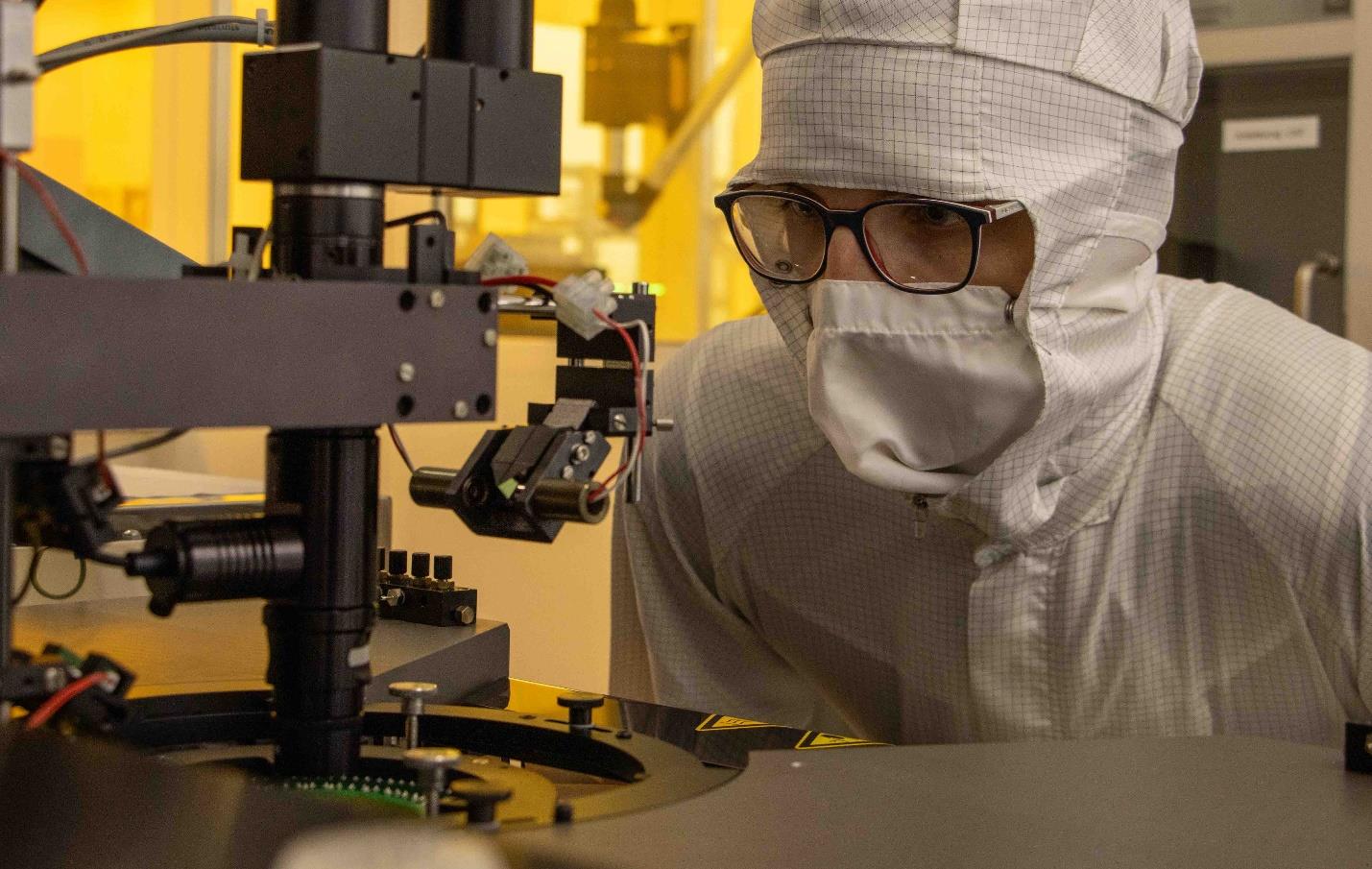Research into thin metal layers on structured silicon substrates for the development of photodiodes based on internal photoemission for the near-infrared spectral range with wavelengths above 1μm
Project duration: 03/2024 - 02/2027

Motivation
Future applications of microelectronics require a critical consideration of the boundary conditions of economic efficiency and availability. A major disadvantage of photodiodes based on III/V compound semiconductors, such as InGaAs, is their very poor compatibility with the silicon technology mainly used in the semiconductor industry. Very high costs are incurred both for the production of the semiconductor material and for the process technology for the realization of components, especially for line and array arrangements due to the increased space requirements.
Goals and approach
The overall aim of the project is to demonstrate for the first time application-relevant silicon photodiodes with an extended spectral range based on internal photoemission. The approach consists of combining a non-planar device topography with very thin nanometer metal layers in the device in order to increase the internal quantum efficiency through the resulting light collection structure.
Innovation and prospects
The results of this project form the basis for silicon-based photodiodes as an alternative to III/V compound semiconductors, e.g. for image sensors in process technology and measurement technology. This will ensure the availability of detectors. Opportunities for new applications and connection projects are opening up, also due to the compatibility with the entire silicon infrastructure. Due to the international shortage of elements such as gallium and indium, the new solution approach using silicon represents a contribution to Germany's technological sovereignty and competitiveness.
 Fraunhofer Institute for Photonic Microsystems
Fraunhofer Institute for Photonic Microsystems